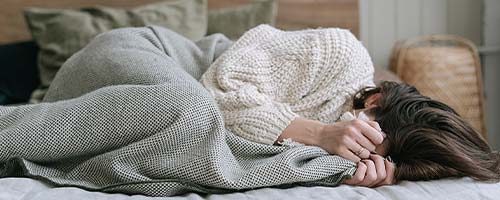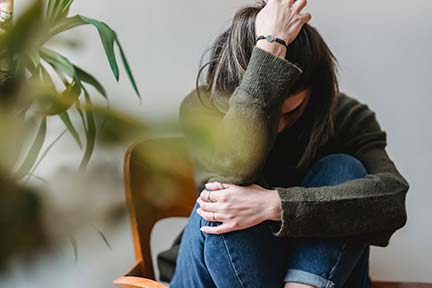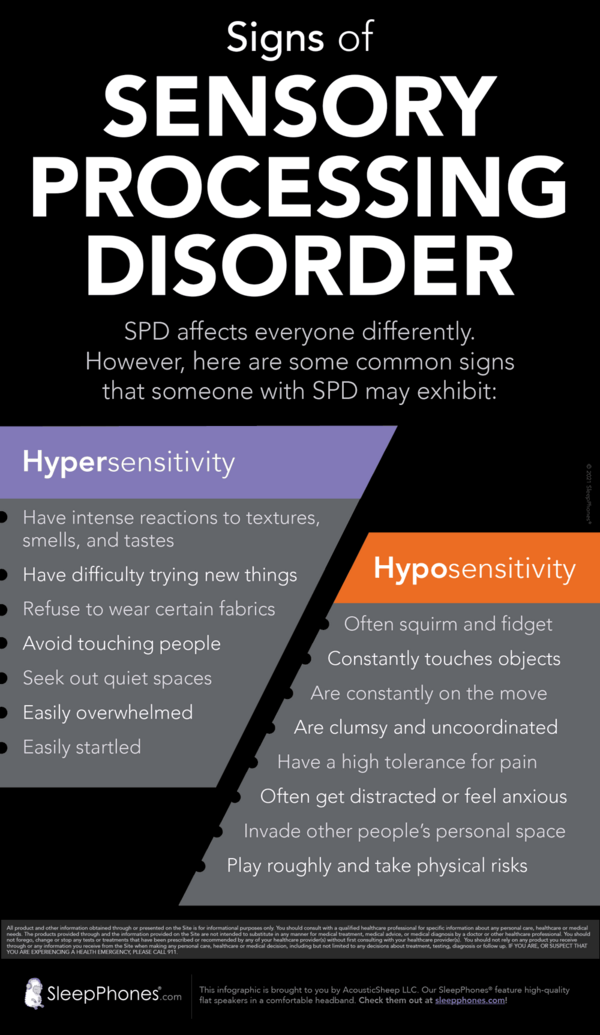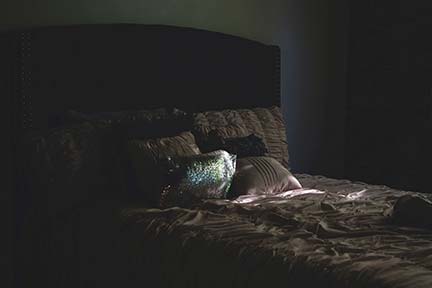Sensory Processing Disorder and Sleep Problems, Plus Two Key Ideas for Sleeping Better

One of the essentials of life, up there with food, water, and shelter, is sleep. But some of us have a hard time catching adequate shuteye—and those with sensory processing disorder (SPD) are no exception.
Sleep helps heal muscles and joints, plays a vital role in the restoration of brain cells, regulates hormones, and supports brain plasticity. When we don't get the nightly rest we need, almost every function of our body and mind is affected.
If you're interested in learning about SPD's relationship to sleep, this resource can be helpful. We at AcousticSheep LLC, makers of SleepPhones® headphones, the most comfortable headphones for sleeping, take a closer look at the indications that someone with SPD may be sleeping poorly and what a person with sensory processing disorder can do to sleep better.
A Quick Review of Sensory Processing Disorder (SPD)
Sensory processing disorder (SPD), formerly referred to as sensory integration dysfunction, is a condition in which the brain has trouble receiving and responding to sensory information. For instance, sounds may be painful, touching certain fabrics may hurt, and a harsh smell may cause nausea.
SPD is different for everyone. For some, it impacts every sense, and for others, only one or a few of them are affected. Further, SPD can make a person over or under-sensitive to sensory stimuli. Because of this sensitivity, people with SPD may avoid specific triggers, which are the sensory inputs that overwhelm them.
While specialists typically identify SPD in people when they're young, some adults also deal with it. SPD is a common comorbidity with autism spectrum disorder and attention-deficit/hyperactivity disorder (ADHD). In fact, doctors do not recognize SPD as a stand-alone medical diagnosis. However, people with neither of these conditions can still have sensory processing issues.
Signs of SPD

It’s important to reiterate that SPD affects everyone differently. But there are some consistent signs that a person may have it. Commonly, people with SPD:
Hypersensitivity
- Easily overwhelmed
- Seek out quiet spaces
- Easily startled
- Bothered by bright light and loud sounds
- Refuse to wear certain fabrics
- Avoid touching people
- Have intense reactions to textures, smells, and tastes
- Have difficulty trying new things
Hyposensitivity
- Constantly touches objects
- Play roughly and take physical risks
- Have a high tolerance for pain
- Often squirm and fidget
- Are constantly on the move
- Invade other people’s personal space
- Often get distracted or feel anxious
- Are clumsy and uncoordinated

Signs that Sensory Processing Disorder is Affecting Sleep
Poor sleep negatively impacts everyone, but the effect can be even more profound for people who already have a condition. The problem is, bedtime routines can be complicated for those with SPD. There are several telltale signs that people's particular processing issues are impacting their sleep. These include:
- Requiring more than 30-45 minutes to prepare for bed
- Taking more than 15-20 minutes to fall asleep
- Needing someone present in the room to fall asleep
- Being restless and changing positions frequently
- Waking up frequently
- Sleeping at inconsistent times
- Getting less than eight hours of sleep.
Poor sleep can then exacerbate sensory processing issues even more. While everyone's sleep routines are different, there are a few ideas you may want to consider. It's important to note that you should always talk to a medical professional that knows your particular situation before trying different treatments, regimens, strategies, or equipment.
Ways to Sleep Better with SPD

People with SPD must make changes to their bedtime routine slowly. Further, they should try these new strategies for a few weeks before deciding if it does or doesn't work.
1. Keep it Dark
Circadian rhythms are like our internal clock. They control our sleep-wake cycle and tell us when we should feel awake and feel sleepy. The most important external factor that impacts our circadian rhythms is light.
For people with SPD, a little light in the room can have massive effects on the quality of their sleep and sleep routine. For that reason, it's helpful to:
- Cover the windows with heavy curtains
- Face the bed away from the windows
- Minimize electronics that light up
- Try using a sleep mask
2. Keep the Noise Low
Noises at night can keep anybody up, but it can severely diminish their ability to fall asleep and stay asleep for those with SPD. To create a bedroom that supports better sleep, consider:
- Minimizing electronics that make sudden sounds
- Insulating windows with heavy curtains
- Switching to a bedroom furthest away from high traffic rooms
- Using white noise
- Turning on a fan
- Playing soothing music or nature sounds
For adults with SPD, it can be helpful to use headphones that are specifically designed for sleep. SleepPhones® headphones can also be used as a comfortable sleep mask to block out unwanted light.
Support from SleepPhones®
Sleep plays a critical role in all of our lives, but it can be a challenge for people with SPD. Whatever changes you make to your nightly routine, be sure to consult a medical professional beforehand. Sudden changes can cause those with SPD to have sensory overload and negatively affect their sleep. Finally, be sure the person with SPD is involved as much as possible when making decisions about their sleep routine.
Learn more about living with sensory processing disorder at our "Sensory Processing Disorder" resource page.
